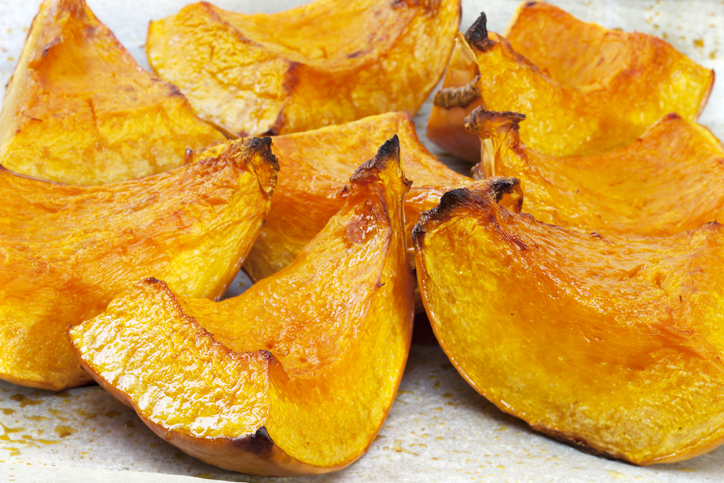Is it Really Pumpkin You’re Buying in Those Cans?
Very few items are as evocative of a season as are pumpkins.
Jack-O-Lanterns, pumpkin pies and warm spices all come to mind.
Yet, the history and importance of the pumpkin is often overlooked. Native Americans prized pumpkins and squash as a sacred crop, as they also did with beans and corn, in fact, these three crops are known as the Three Sisters.
The pumpkin vines provided much needed shade for the soil, helping to keep the moisture in the ground as all three crops were grown symbiotically. Archaeologists have found evidence that pumpkins have been grown for millennia, in fact, it is believed that the first crop was grown in Oaxaca, Mexico over 7,500 years ago.

These early crops bore very little resemblance to the round, bright orange specimens we have grown accustomed to. Small and hard with a rather bitter flavor, it is believed that pumpkins were one of the earliest crops domesticated by early civilizations as a food source. Their hard, thick skin allowed the pumpkins to be stored through the hard winter months and became a hedge against crop failures. Interestingly, it is believed the early English settlers were probably quite familiar with the pumpkin, as seeds were brought back to Europe by explores and became rather popular in Great Britain.
Pumpkin facts:
- Pumpkins are 90% water
- 80% of the American Pumpkin supply is available in October
- Native Americans made mats out of strips of dried pumpkin
- Over 90% of the pumpkin crop grown domestically is grown in Illinois
- Jack o’lanterns started as carved turnips, potatoes or beets

One of the most familiar uses for pumpkins is the ubiquitous pumpkin pie.
However, the early version didn’t use the pumpkin as the filler, but rather it was used as the cooking vessel. Modernization and increased availability changed how we began to utilize pumpkins, and with the advent of commercial canning, the popularity of pumpkin pies was cemented into our collective consciousness.
When it comes to canned, is it really pumpkin you’re buying?
Maybe not. The most popular brand acknowledges that it uses 100% Dickinson Pumpkins, which bear little resemblance to the round, orange pumpkins we have grown to associate with all things pumpkin. Some canned pumpkin is in fact different varieties of squash. And while that detail may be a surprise, it is actually culinarily moot. Potato, potatoe.
Why do manufacturers use this variety?
That answer is simple, Connecticut Field Pumpkins are really not that flavorful and the flesh is rather stringy. The FDA has even issued regulations stating: “In the labeling of articles prepared from golden-fleshed, sweet squash or mixtures of such squash and field pumpkin, we will consider the designation “pumpkin” to be in essential compliance with the “common or usual name” requirements …of the Fair Packaging and Labeling Act.”

And while it is a time saver to open a can, you just can’t replace the taste of freshly prepared pumpkin.
It is a little more work, but your efforts will be rewarded. If you are looking for the perfect pumpkin to replicate that smooth texture you associate with a can, try the Sugar Pie pumpkin variety. It is small, easy to handle, and it is an appropriately named variety as it is commonly used for pies. The flesh cooks up creamy and smooth, and it makes a perfect puree for pies, baked goods, and all sorts of stuffings. Another great one is the Red Kuri squash. I think the flavor is impeccable. It is a deeper colored, and flavored, squash. The flesh is smooth, not as smooth as the Pie pumpkin, but it is not a fibrous as other winter squash can be.
For the rest of the year, use canned. But during the autumnal months, try to use fresh.
Canned pumpkin has its place, but cooking with pumpkins, and squash for that matter, is pretty easy.
Pumpkins and hard winter squash varieties are generally available from late September, peaking in October, and then start to taper off during November with a few varieties available just before Thanksgiving. Check out Produce 101: Winter Squash for a breakdown of some of the more common squash varieties, and find out each of their cooking strengths. I even mention a few that don’t need to be peeled.
Learn more in Produce 101: Winter Squash
Some winter squash are available year round, and some have an autumnal season. Contact your Marketing Associate about availability and adding some to your next order. If you are not a customer, find out how to become one today!
Article submission by Chef Daniel Snowden, the Director of Culinary Development for FreshPoint Central Florida. He has been in the produce industry years almost 20 years and loves getting geeky about food. Follow FreshPoint Central Florida on Facebook and Instagram.
Some tools you can use:
Visit freshpoint.com for our seasonal availability guides—and while you are there, check out the FreshPress, our latest market report. Place your orders online with ease at myfreshpoint.com. Did you know you can receive real-time reliable delivery alerts on the day of your delivery? Activate and subscribe at FreshPoint.com/mydelivery
Download our app and take your produce management on the go. Place orders, review flyers, watch videos…all in one spot!
Find out more details about our UBU program, and how we are shining a spotlight on food waste while making value and food safety a priority.
We buy local to strengthen regional economies, support family farms, preserve the local landscape, and to provide fresh-from-the-farm food to our customers. Local.freshpoint.com connects you to your local farmers like never before! Customize your search by zip, city, state, radius…even by crops and growing methods. Pop in your zip code and learn about our local farmers.
Socialize with us!
Did you know we are on YouTube? Head over to our page and check out our 75+ videos. Don’t forget to subscribe, and also be a part of our Bell Team—hit the little bell icon to get notifications when we upload new videos.
Follow FreshPoint, Inc. on Facebook, Twitter, Instagram, and LinkedIn…and follow The Produce Hunter on Instagram as she finds the best specialty produce at the Santa Monica Farmers Market.

